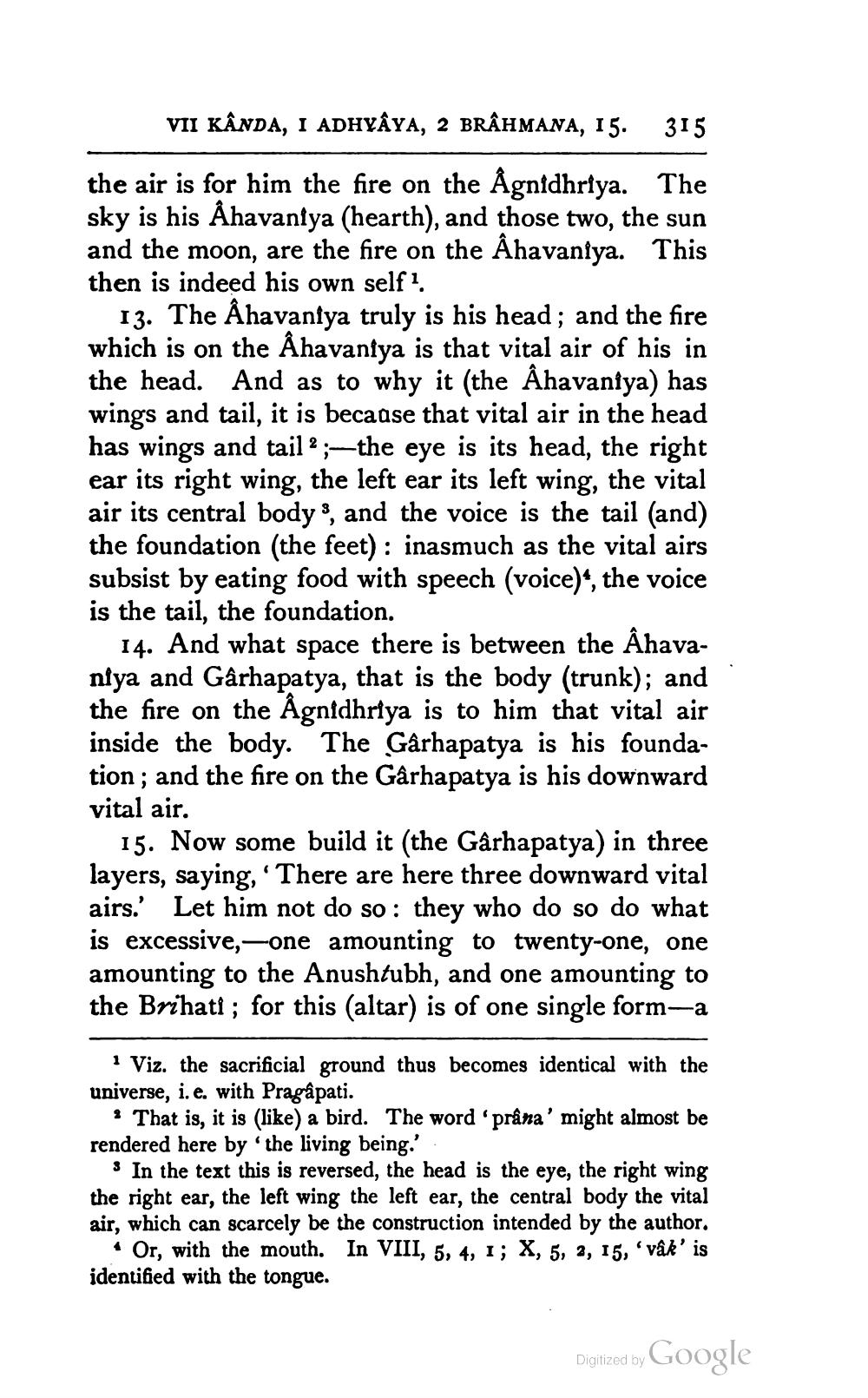________________
VII KÂNDA, I ADHYÂYA, 2 BRÂHMANA, 15.
315
the air is for him the fire on the Ågnidhriya. The sky is his Ahavaniya (hearth), and those two, the sun and the moon, are the fire on the Âhavaniya. This then is indeed his own self 1.
13. The Åhavanfya truly is his head; and the fire which is on the Åhavaniya is that vital air of his in the head. And as to why it (the Åhavaniya) has wings and tail, it is because that vital air in the head has wings and tail ? ;--the eye is its head, the right ear its right wing, the left ear its left wing, the vital air its central body 5, and the voice is the tail (and) the foundation (the feet): inasmuch as the vital airs subsist by eating food with speech (voice)', the voice is the tail, the foundation.
14. And what space there is between the Ahavaniya and Gârhapatya, that is the body (trunk); and the fire on the Agnidhriya is to him that vital air inside the body. The Gårhapatya is his foundation; and the fire on the Garhapatya is his downward vital air.
15. Now some build it (the Garhapatya) in three layers, saying, 'There are here three downward vital airs. Let him not do so : they who do so do what is excessive,-one amounting to twenty-one, one amounting to the Anushtubh, and one amounting to the Brihati; for this (altar) is of one single form-a
1 Viz. the sacrificial ground thus becomes identical with the universe, i. e. with Pragâpati.
. That is, it is (like) a bird. The word 'prâna' might almost be rendered here by the living being.'
3 In the text this is reversed, the head is the eye, the right wing the right ear, the left wing the left ear, the central body the vital air, which can scarcely be the construction intended by the author.
* Or, with the mouth. In VIII, 5, 4, 1; X, 5, 2, 15, 'vâk' is identified with the tongue.
Digitized by Google




